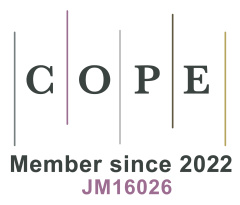Biomechanical application research on cognitive health management in the elderly based on data analysis and intelligent coordination in the age of artificial intelligence
Abstract
The conventional approach to elder care is no longer able to satisfy the rising need for medical attention for the elderly due to China’s aging population. The demographic trait of “getting old before getting rich” presents a challenge to the distribution of social healthcare resources, as this article first examines the current pattern of changes in the composition of the older population. The community-based “healthcare integration” paradigm of senior care services has emerged as a successful remedy in this regard. Drawing on biomechanical principles, we can envision the community healthcare system as a complex “biomechanical network”. In order to categorize and predict the health data of the elderly, this study constructs a mathematical model akin to analyzing biomechanical forces and movements. By employing methods similar to optimizing structural loads, such as the CART decision tree and support vector machine (SVM) optimization, we enhance the model’s precision. Just as biomechanical systems adapt to varying loads, our model adapts to handle complex health data. By building the optimal classification plane of the support vector machine and adding relaxation variables, the model application solves the classification problem of linearly indivisible data, further enhancing the model’s accuracy and effectiveness, much like how a biomechanical structure self-adjusts to external pressures. In this paper, a geriatric health service platform based on information technology, including big data and the Internet of Things (IoT), is formed. The service system is a tripartite linkage disease management service model that covers the synergistic cooperation of community hospitals, third-party enterprises, and the streets where they are located. A prediction model for common cases, such heart disease, was developed by preprocessing and cleaning the data of 2311 valid samples from the China Geriatrics Center. The dataset was then characterized. The findings demonstrate the model’s high operability and accuracy in predicting health and managing long-term care for older people who are mobility. In the context of an aging society, by integrating biomechanical insights into the design of this healthcare model, the research not only establishes a theoretical foundation for community health care integration but also provides valuable references for implementing digital senior care services and enhancing health management for the elderly in an aging society.
References
1. Abir SMAA, Islam SN, Anwar A, et al. Building Resilience against COVID-19 Pandemic Using Artificial Intelligence, Machine Learning, and IoT: A Survey of Recent Progress. IoT. 2020; 1(2): 506-528. doi: 10.3390/iot1020028
2. Górriz JM, Ramírez J, Ortíz A, et al. Artificial intelligence within the interplay between natural and artificial computation: Advances in data science, trends and applications. Neurocomputing. 2020; 410: 237-270. doi: 10.1016/j.neucom.2020.05.078
3. Afzal MK, Zikria YB, Mumtaz S, et al. Unlocking 5G Spectrum Potential for Intelligent IoT: Opportunities, Challenges, and Solutions. IEEE Communications Magazine. 2018; 56(10): 92-93. doi: 10.1109/mcom.2018.8493125
4. Guo Z, Yu K, Kumar N, et al. Deep-Distributed-Learning-Based POI Recommendation Under Mobile-Edge Networks. IEEE Internet of Things Journal. 2023; 10(1): 303-317. doi: 10.1109/jiot.2022.3202628
5. Liao H, Zhou Z, Liu N, et al. Cloud-Edge-Device Collaborative Reliable and Communication-Efficient Digital Twin for Low-Carbon Electrical Equipment Management. IEEE Transactions on Industrial Informatics. 2023; 19(2): 1715-1724. doi: 10.1109/tii.2022.3194840
6. Pan J, Ye N, Yu H, et al. AI-Driven Blind Signature Classification for IoT Connectivity: A Deep Learning Approach. IEEE Transactions on Wireless Communications. 2022; 21(8): 6033-6047. doi: 10.1109/twc.2022.3145399
7. Zhang G. Enhancing English Pronunciation Assessment in Computer-Assisted Language Learning for College Students. Journal of Combinatorial Mathematics and Combinatorial Computing. 2024; 120(1): 275-283. doi: 10.61091/jcmcc120-24
8. Gao Y, Wang B, Xu P. Big Data Analysis Based on the Evaluation of College Students’ Civic Web. Journal of Combinatorial Mathematics and Combinatorial Computing. 2024; 120(1): 265-274. doi: 10.61091/jcmcc120-23
9. Azzi S, Gagnon S, Ramirez A, et al. Healthcare Applications of Artificial Intelligence and Analytics: A Review and Proposed Framework. Applied Sciences. 2020; 10(18): 6553. doi: 10.3390/app10186553
10. Holroyd C. Technological innovation and building a ‘super smart’ society: Japan’s vision of society 5.0. Journal of Asian Public Policy. 2020; 15(1): 18-31. doi: 10.1080/17516234.2020.1749340
11. Pramanik MI, Lau RYK, Demirkan H, et al. Smart health: Big data enabled health paradigm within smart cities. Expert Systems with Applications. 2017; 87: 370-383. doi: 10.1016/j.eswa.2017.06.027
12. Syed L, Jabeen S, S. M, Alsaeedi A. Smart healthcare framework for ambient assisted living using IoMT and big data analytics techniques. Future Generation Computer Systems. 2019; 101: 136-151. doi: 10.1016/j.future.2019.06.004
13. Radwan A, Huq KMS, Mumtaz S, et al. Low-Cost On-Demand C-RAN Based Mobile Small-Cells. IEEE Access. 2016; 4: 2331-2339. doi: 10.1109/access.2016.2563518
14. Zhou S, Ni Z, Ogihara A, et al. Behavioral Patterns of Supply and Demand Sides of Health Services for the Elderly in Sustainable Digital Transformation: A Mixed Methods Study. International Journal of Environmental Research and Public Health. 2022; 19(13): 8221. doi: 10.3390/ijerph19138221
15. Roberts H, Cowls J, Morley J, et al. The Chinese approach to artificial intelligence: an analysis of policy, ethics, and regulation. AI & SOCIETY. 2020; 36(1): 59-77. doi: 10.1007/s00146-020-00992-2
Copyright (c) 2025 Dongxian Yu, Guoke Qiu, Ming Li

This work is licensed under a Creative Commons Attribution 4.0 International License.
Copyright on all articles published in this journal is retained by the author(s), while the author(s) grant the publisher as the original publisher to publish the article.
Articles published in this journal are licensed under a Creative Commons Attribution 4.0 International, which means they can be shared, adapted and distributed provided that the original published version is cited.



 Submit a Paper
Submit a Paper
